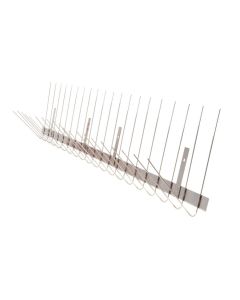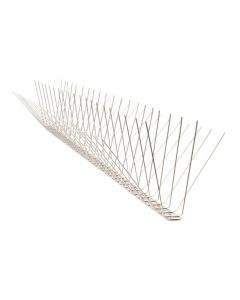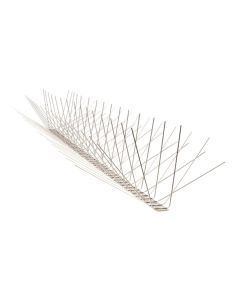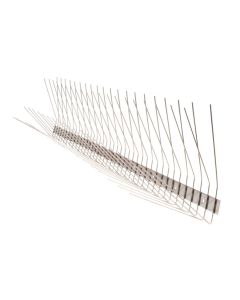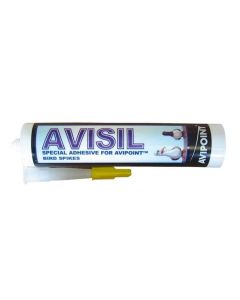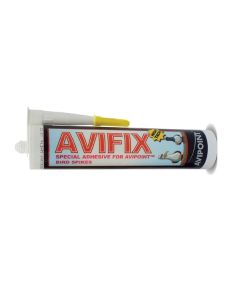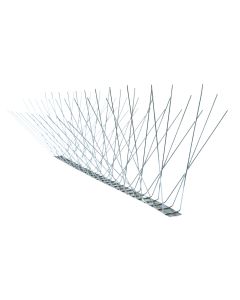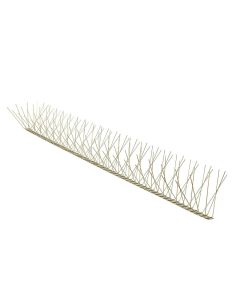How to Choose the Right Bird Spikes: A Complete Guide
How to Choose the Right Bird Spikes: A Complete Guide
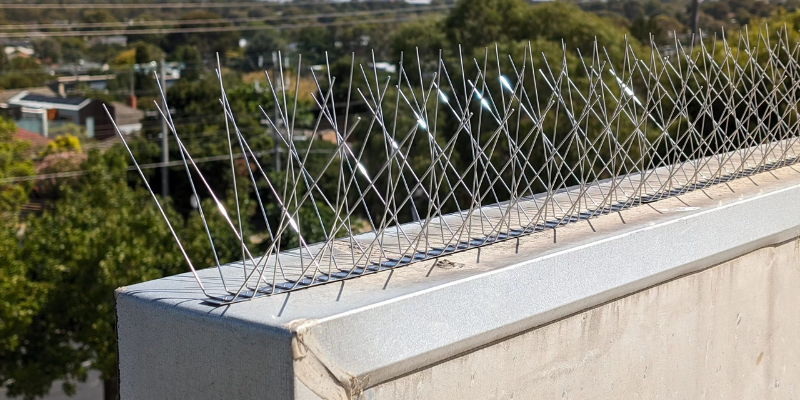
Birds can be welcome visitors to our properties, but they can also cause significant problems when they land, roost or nest in undesirable areas like ledges, roofs, or gutters. If you’re dealing with unwanted avian visitors, bird spikes are one of the most effective and humane bird control solutions available.
Selecting the right bird spikes is essential for effectively deterring birds as they’re clever and adaptable creatures that can quickly find ways to bypass incorrectly selected or poorly installed spikes. Let’s explore how to choose the best bird spikes for your job.
What are bird spikes?
Bird spikes, also known as anti-bird spikes, are long, thin strips of stainless steel or plastic spikes attached to a narrow base. The spikes typically have dulled or blunted tips to ensure they do not cause harm to the birds if they come into contact with the spikes.
When installed on surfaces where birds typically land or roost, they create an uneven or uncomfortable surface that deters birds from settling without causing them any harm. Bird spikes are commonly used in both residential, commercial and industrial settings for bird-proofing purposes.
Where can you use bird spikes?
Bird spikes can be used on almost any narrow, horizontal location, but they’re particularly ideal when you need to deter birds from specific areas of a property, such as:
- Ledges, eaves, windowsills or awnings where birds tend to perch
- Gutters and drainage systems
- Parapets and signage on commercial buildings
- Beams
- Fences
- Railings and light fixtures
They are particularly useful for deterring birds from landing and roosting in order to prevent damage to structures, reduce the spread of bird-borne diseases, and maintain cleanliness around high-traffic areas.
What are the differences between models of bird spikes?
Different models of bird spikes will usually vary in spike density, spike width, length of the spikes and material.
Spike density
Bird spikes come in various densities, where the density refers to the number of spikes on each strip. More densely packed spikes will provide better coverage and make it harder for birds to land, while sparser and less dense strips are suitable for controlling larger birds but could allow smaller birds to slip through.
Width of the bird spikes
Choosing the correct width is crucial for effectiveness. The spikes need to extend over the edge of the application surface by about ½ inch and should be within 1 inch of any adjacent walls. If the spikes are too narrow for the surface or improperly installed, birds may find gaps to exploit and land.
Length of the bird spikes
To be effective, the length of each protruding spike should be longer than the legs of the birds you’re trying to deter. Larger birds, such as seagulls, require longer spikes, while smaller species may be deterred by shorter spikes.
Material of the bird spikes
Bird spikes are typically made from either plastic or stainless steel, each with its own advantages:
- Stainless steel bird spikes: While more expensive, stainless steel spikes are far more durable, resistant to weather, and less visible from a distance. They offer better long-term value and tend to be more effective at deterring birds due to their sharper, harder spikes. At Globe, we highly recommend stainless steel spikes for durability and long-lasting control.
- Plastic bird spikes: These are a little more affordable than stainless steel. However, they are less durable and can be more visible than stainless steel spikes.
Key factors to consider when choosing bird spikes
Choosing the right bird spikes involves several important factors.
- What types of birds are you trying to deter?
Understanding the bird species causing the issue will help you choose the right bird spikes as each model is usually designed to deter specific types and sizes of birds.
- For larger birds like pigeons, seagulls, cockatoos, galahs and other large species, use large, extra-tall bird spikes to prevent them from landing on unwanted surfaces.
- For smaller birds such as starlings or mynas, you will need to install a bird spike that does not allow them to easily slip through the spikes and continue to roost. For these smaller birds, we highly recommend choosing extra high-density spikes. These strips have a greater number of spikes on the strip, making it more difficult for smaller birds to slip between the spikes.
- Where are you placing the bird spikes?
For effective bird control, spikes should be placed on surfaces where birds typically perch or roost. Popular bird spike installation areas include ledges, parapets, windowsills, rooflines, signs, and gutters. Ensure they cover the entire width of the surface for maximum protection.
The more premium bird spikes from manufacturers like VEXO, have bird spikes that are uniquely designed and made to fit specific installation areas.
- For gutters and fence tops, the VEXO GX21 bird spikes are designed to fit securely within the gutter channel. They also feature handy fold-down screw tabs for easy and secure installation. Many pest controllers have found that VEXO’s gutter spikes are the easiest and quickest to install.
- For eaves, narrow ledges, and angled or recessed solar panels, the VEXO SW71 bird spikes feature spikes with specially designed angles along the strip to ensure a perfect fit in these areas whilst still providing the coverage required for protection against nuisance birds.
- Installation method
Bird spikes can be installed using two main methods:
- Adhesive installation: Bird spikes can be applied using an adhesive like Avifix or Avisil. This method is quick and easy, suitable for most surfaces, and doesn’t require drilling.
- Screw-on installation: This is a more permanent option, providing a secure hold, particularly in areas exposed to strong winds or heavy bird activity. Though it requires more effort, it ensures long-lasting protection. However, depending on the installation surface and your client’s requirements, this may not be a viable option.
Advantages of bird spikes
Bird spike strips offer numerous advantages, making them a popular bird control solution:
- Easy installation: Bird spikes are supplied in preassembled strips so no special tools are required. Installation can be permanent with screws or adhesive, or temporary with zip ties.
- Low maintenance: Once permanently installed, bird spikes require almost no maintenance. Designed to withstand harsh weather conditions, they can provide long-term protection for years.
- Minimal visual presence: Bird spikes are designed to be minimally visible from a distance. They don’t interfere with communication or electrical transmissions, so they can be discreetly installed in highly visible areas.
- Humane solution: Bird spikes are totally humane, with dull tips that gently discourage birds from landing without causing harm. The flexible nature of the spikes ensures birds are deterred without injury.
- Highly effective: When installed correctly, bird spikes are one of the most effective bird deterrent methods available, physically preventing birds from roosting or landing in unwanted areas.
Disadvantages of bird spikes
While bird spikes are effective, there are a few limitations to keep in mind:
- Limited aesthetic appeal: Although minimally visible, bird spikes may still detract from the appearance of architectural structures.
- Unsuitable for small birds: Bird spikes may be less effective for small birds like sparrows, which can sometimes navigate between the spikes due to their diminutive size.
- Not a complete barrier: Bird spikes are designed to deter birds from landing, but they may not prevent all types of birds from accessing the area, especially if the spikes are improperly installed or sized. For a complete barrier, a solution like bird netting may be more suitable.
Conclusion
Choosing the right bird spikes depends on several factors, including the type of bird, the placement, the spike density and width, the material, and the installation method. By considering these aspects, you can ensure you select the most effective and durable bird spikes for your bird control needs. Whether you're dealing with pigeons, seagulls, or smaller birds, bird spikes provide a long-lasting, humane, and reliable solution to keep properties bird-free.
Shop everything you need for successful bird spike installation from Globe Pest Solutions online or at your local Globe branch.





